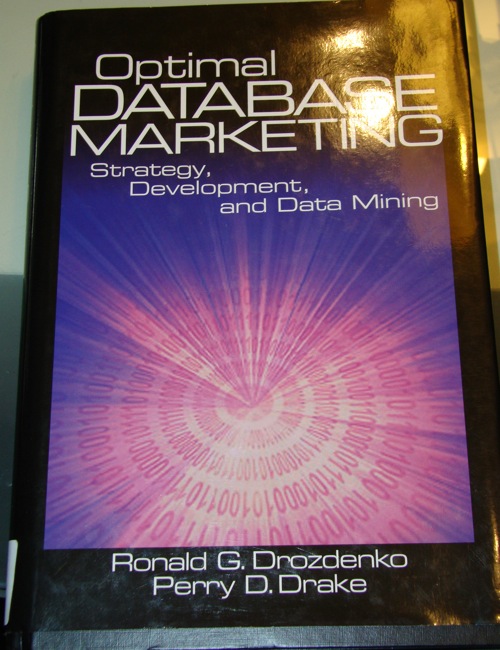Whether the database uses simple or sophisticated technologies, the purpose is the same — to gain a better understanding of customers in order to increase the customer’s satisfaction and the organization’s objectives.
Even if you just use a sheet of paper where you note your customer favorite drinks down, it’s basically a simple marketing database.
Start-up costs for internal databases and order fulfillment can be high compared to traditional brick and mortar retailing, and often database marketing has higher costs per contact. For all these reasons, database marketing may not be feasible for many low-margin products.
Should go without saying, however there are always people who rather sell their newest technology without understand their customer’s need.
Remember that the fundamental rationale for developing the database is to help to achieve organizational objectives. If the database does not accomplish this or hampers interaction with customers, as might occur with some small businesses, then there is no reason to implement it.
Think of a food vendor who serves busy businesspeople in a city’s commerce area. Although the vendor may serve dozens of customers on a given day, he gets to know many of them by name because they frequent his small stand. For example, when a particular customers walks up to his stand, he knows her first name, how she takes her coffee, and how much cream cheese to put on her raisin bagel. The food vendor has developed a “mental” customer database.
I think that’s that is a great example. It shows how easy and helpful a customer database can be and that you don’t have to use expensive software to establish one.
These customers are more likely to be satisfied and consequently more likely to return to his stand in the future […] The vendor may adjust his product assortment based on sales trends he notes. […]
Two levels of possibilities. Firstly, it helps you deliver more relevant offers to your customer. Secondly, it allows you to connect it to other parts of business, like logistics.
Direct marketers have an advantage over retailers and other marketers in that they can quickly test new marketing strategies and validate the results, if they have a well-maintained database.
This is a great advantage which is also available to digital marketers. If you don’t try to optimize and test your strategies, you’ll basically enchain yourself.
A direct marketing professional new to a company must develop an intimate knowledge of the company’s customer data prior to any attempt to develop a name selection methodology for purpose of promotion or treatment. It is a time-consuming exercise but integral to ensuring that erroneous and costly assumptions are avoided during the analysis and modeling phases.
This procedure is important for all data-driven activities. If you don’t understand your observations then it’s hard to get valuable information out of them.
Depending on the objective at hand, different customers information may be used for the actual segmentation. For example, customer activity data (RFM) may be used for product promotion segmentation, and demographic and lifestyle data may be used for market research segmentation.
For each segment there should be an economical way to reach the persons. For direct marketers this is easier but if you don’t have direct contact addresses this can be quite challenges.
You’ll probably see that different segments react to different offerings. For example in the finance industries there are empty nesters, i.e. families where the children don’t live at their parents anymore, which are receptive to annuities or young families with children which react positively to insurances.
Later the authors talk about RFM (Recency, Frequency, Monetary Value) vs. CHAID. RFM is a rather mature technology and often used however they saw that CHAID can deliver better results.
There can be some issues with testing:
- Promotional Intensity – maybe the amount of promotions can influence the behavior stronger than just the content
- New product destroys the market of the old one
- Too many products which lead to customer indecision
Tips:
- Don’t always test the same persons
- Create a hold-out set which has the same distribution (e.g. RFM) as the control group
- Always keep the original set because things can change between start and end of your experiment
- Try to calculate the LTV – it doesn’t matter if you can get short term profit which destroys the long term earnings
- Try to test everything
Choose your confidence intervals is influenced by your goal. If you want to test a new product or other high risk undertakings, then choose a large CI. Otherwise, you can choose a rather small CI.
I personally would recommend using Baysian methods for constructing CI, called credible intervals. The advantage is that the interpretation is a lot easier than using frequentist CI. A 95% credible interval means that with a probably of 95% the real value is within this interval.
Also timing can be rather important. Besides the traditional week of day, etc. the press, natural disasters and other things can influence your results. So try to incorporate them into your interpretation.
All in all, the book was okay. It has a strong focus on enterprise level db marketing but only provides an overview. It’s probably quite good if you are on the business side and heard a course on database marketing or direct marketing.
